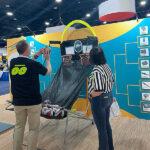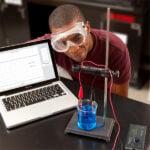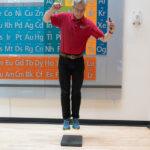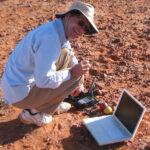
Sharing ideas and inspiration for engagement, inclusion, and excellence in STEM
Vernier offers more than 1,000 experiments in biology, chemistry, engineering/robotics, and physics that can help you inspire students and integrate data-collection technology into your STEM classes.
All three of this month’s experiments were featured in or inspired by recent Vernier webinars. Our webinars are a great way to see our experienced educational technology specialists demonstrate Vernier experiments, answer your top questions, and provide tips about using our products to engage your students. Visit our website to check out webinar recordings and register for upcoming webinars.
Biology
Students use the Go Direct® SpectroVis® Plus Spectrophotometer to conduct this experiment. The objectives of the experiment are to
- Determine the protein content of milk.
- Use reference sources to find out more about protein and then choose and investigate a researchable question. Some topics to consider include
- Macromolecules
- Proteins
- Monomers
- Polymers
- Amino acids
- Alpha carbons
- Carboxyl groups
- Primary structures
- Amino groups
- R groups
- Peptide bonds
- Polypeptides
- Bradford protein assays
- Beer’s law
Chemistry
“Using Polarimetry to Identify Sugar and Sweeteners in Beverages”
Students use the Go Direct Polarimeter to conduct this experiment. The objectives of the experiment are to
- Calculate the specific rotation of sugars.
- Identify common sugars and artificial sweeteners in everyday beverages.
Physics
“Projectile Motion (Photogates)”
Students use the Go Direct Photogate or two Photogates to conduct this experiment. The objectives of the experiment are to
- Measure the velocity of a ball bearing or marble rolling on a level surface.
- Apply concepts from two-dimensional kinematics to predict the landing position of a ball bearing or marble in projectile motion.
- Take into account trial-to-trial variations in the velocity measurement when calculating the landing position of a real projectile.
Share this Article

Sign up for our newsletter
Stay in the loop! Beyond Measure delivers monthly updates on the latest news, ideas, and STEM resources from Vernier.






